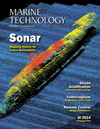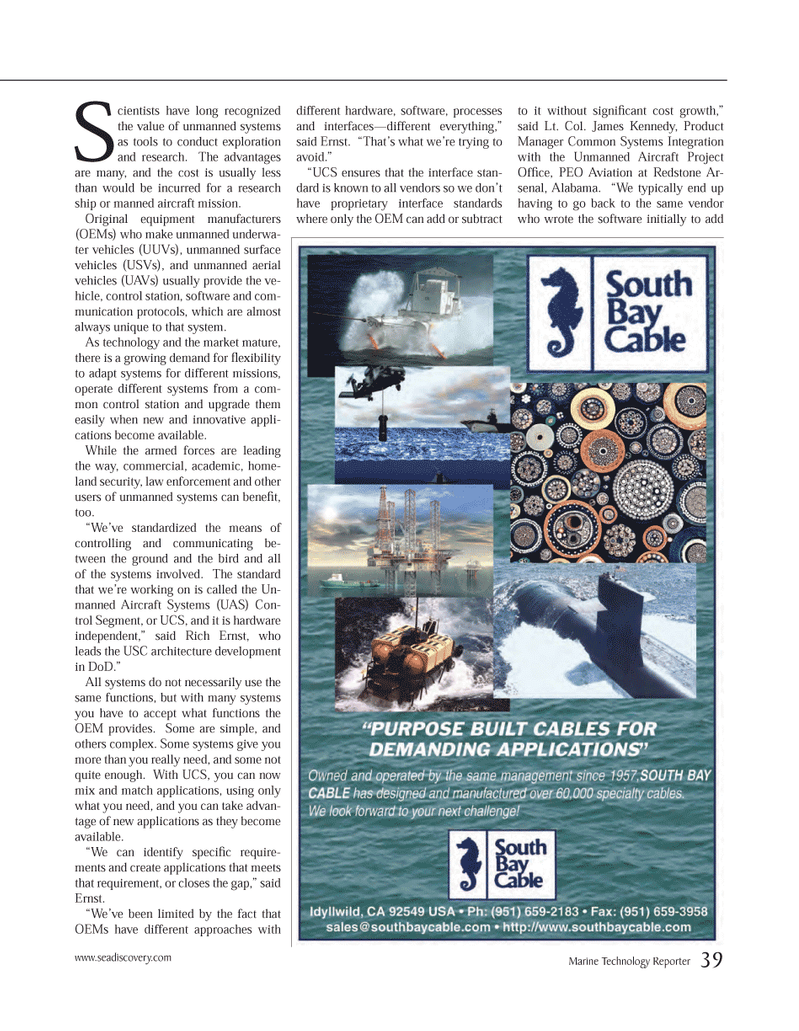
Page 39: of Marine Technology Magazine (March 2014)
Instrumentation: Measurement, Process & Analysis
Read this page in Pdf, Flash or Html5 edition of March 2014 Marine Technology Magazine
Scientists have long recognized the value of unmanned systems as tools to conduct exploration and research. The advantages are many, and the cost is usually less than would be incurred for a research ship or manned aircraft mission.Original equipment manufacturers (OEMs) who make unmanned underwa- ter vehicles (UUVs), unmanned surface vehicles (USVs), and unmanned aerial vehicles (UAVs) usually provide the ve- hicle, control station, software and com- munication protocols, which are almost always unique to that system. As technology and the market mature, there is a growing demand for ß exibility to adapt systems for different missions, operate different systems from a com- mon control station and upgrade them easily when new and innovative appli- cations become available. While the armed forces are leading the way, commercial, academic, home- land security, law enforcement and other users of unmanned systems can beneÞ t, too.ÒWeÕve standardized the means of controlling and communicating be-tween the ground and the bird and all of the systems involved. The standard that weÕre working on is called the Un- manned Aircraft Systems (UAS) Con- trol Segment, or UCS, and it is hardware independent,Ó said Rich Ernst, who leads the USC architecture development in DoD.Ó All systems do not necessarily use the same functions, but with many systems you have to accept what functions the OEM provides. Some are simple, and others complex. Some systems give you more than you really need, and some not quite enough. With UCS, you can now mix and match applications, using only what you need, and you can take advan- tage of new applications as they become available. ÒWe can identify speciÞ c require- ments and create applications that meets that requirement, or closes the gap,Ó said Ernst.ÒWeÕve been limited by the fact that OEMs have different approaches with different hardware, software, processes and interfacesÑdifferent everything,Ó said Ernst. ÒThatÕs what weÕre trying to avoid.Ó ÒUCS ensures that the interface stan- dard is known to all vendors so we donÕt have proprietary interface standards where only the OEM can add or subtract to it without signiÞ cant cost growth,Ó said Lt. Col. James Kennedy, Product Manager Common Systems Integration with the Unmanned Aircraft Project OfÞ ce, PEO Aviation at Redstone Ar- senal, Alabama. ÒWe typically end up having to go back to the same vendor who wrote the software initially to add www.seadiscovery.com Marine Technology Reporter 39MTR #2 (34-49).indd 39MTR #2 (34-49).indd 392/21/2014 11:07:16 AM2/21/2014 11:07:16 AM

 38
38

 40
40
